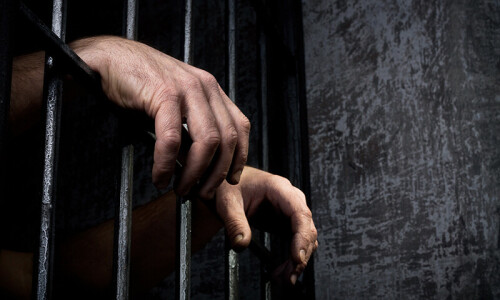FOR those younger Pakistanis born in the 1990s and later, the country’s growing dysfunctionality and its slipping further behind in the global comity of nations across a wide front, has seemed to be the only reality they have grown up with. Sombre and immutable. However, this was not always the case. Nor is it destined to continue.
Till the start of the 1990s, Pakistan had a stellar record of economic performance. The economy grew at an annual average of 5.25pc between 1951 and 1989, with gross domestic product increasing by a multiple of over 11 (times) for this period. Per-capita income also grew at a respectable pace. Mega-corruption was unheard of, and institutions, especially the bureaucracy, were largely competent and de-politicised. As a result, large investments in infrastructure were made in the 1960s and 1970s, and the productivity payoffs carried the economy on a higher trajectory than most of its peers.
For most of the developing world, the reality was starkly different. Growth rates were anaemic (though they had started picking up for some), hyper-inflation was common, massive devaluations and sovereign defaults and debt restructurings were the norm. Most of the stars of the past two decades in the emerging markets universe — Turkey, Brazil, Indonesia, India, Mexico — were floundering; some were certified economic ‘basket cases’.
Till the start of the 1990s, Pakistan had a stellar record of economic performance.
Somewhere around the 1990s, however, the basis was laid for a turnaround in the fortunes of Pakistan and its developing country peers — for Pakistan, a turn for the worse, while for most of the others, progress by leaps and bounds.
It will be instructive to examine a few of these erstwhile ‘basket cases’ — how far in the dumps they were, and, importantly, how they turned around.
Turkey: Turkey’s historical legacy is, of course, unique as well as rich, going back several centuries. So is its history of attempts at restructuring and rejuvenation. However, in the case of modern, post-Ottoman Turkey, economic performance was patchy, at best, till the early 2000s. Between 1989 and 1999, Turkey’s economy grew at an annual average rate of 3.6pc, while inflation during 1980-1999 averaged 64pc.
Periodic devaluations of the Turkish lira of staggering magnitude were common, as was capital flight. Despite all its locational advantages, foreign investors were reluctant to invest in a highly volatile macroeconomic as well as security environment (Turkey was battling a full-fledged insurgency by the Kurdistan Workers’ Party, or PKK). In fact, on my first visit in 1985, flying into Istanbul airport there were more members of the security forces present than visitors; passengers were frequently disembarked for baggage checks, and a nightly curfew was imposed at around 10 pm. (And, the Turkish passengers on the plane applauded the captain on landing — either from relief on making it back to terra firma, or to congratulate a three-pointer, which of the two I couldn’t figure out.)
This is so far removed from today’s modern, pulsating and ‘on-the-go’ Turkey. The turnaround came largely due to the efforts of a reformer drafted in by prime minister Bulent Ecevit’s government. Kemal Dervis resigned from a senior position at the World Bank, and crafted the Turkish economy’s remarkable restructuring mainly by the introduction of market-based reform. As a result, since 2004, Turkey’s economy has grown at an average of 6.7pc per year (excluding 2008-09), while inflation has averaged 8.9pc.
Brazil: Like Turkey, Brazil has a long history of below-par economic performance during much of the 20th century, characterised by vicious boom-bust cycles. While the basis for industrialisation was laid in the 1950s and 1960s, Brazil’s economic fortunes hit rock bottom in the 1990s with hyper-inflation (averaging a difficult-to-fathom 1,485pc per year), sovereign debt crises, and bouts of exchange rate devaluation.
In 1994, the most far-reaching and wide-ranging reform in recent Brazilian history was launched, dubbed the Plano Real. President Luiz Inacio Lula da Silva continued the reform push and turned around Brazil’s economic performance from around 2002 onwards.
India: Closer to home, India’s economy had lumbered since independence at a low, steady rate of growth that had come to be patronisingly dubbed as the ‘Hindu rate of growth’. Lethargic politicians and an overbearing bureaucracy combined to burden the economy and enrich the few.
In 1991, India experienced a massive balance of payments crisis, and with foreign exchange reserves all but drying up, came narrowly close to defaulting on its external obligations. It had to take on an emergency loan from the IMF, as well as swap some of its gold holdings for liquidity. That episode, which now seems light years away, served as a lightning rod for the introduction of serious reform by then-finance minister Dr Manmohan Singh, which, by India’s standards, was quite far-reaching. (It is ironic that the same reformer, Dr Singh, came to be identified as the ultimate non-reformer in his tenure as the prime minister).
Over the next two decades, India moved firmly to the centre-stage of the global economy, and despite its many vulnerabilities and failings on the economic side, has more going for it than against it. Presently, its biggest plus point seems to be none other than Prime Minister Modi himself who, despite his stigmatised past as the chief minister of Gujarat at the time of the massacre of Muslims, has all the trappings of emerging as a truly transformative leader for his country.
Bottom-line: Pakistan’s problems are not unique in a historic context. Other countries have experienced far more severe economic as well as internal security challenges. A committed leadership with vision is all that it takes to transform the economic fortunes of a country. Another lesson from history: usually, it has been a single person who has made all the difference — for better or for worse.
The writer is a former economic adviser to government, and currently heads a macroeconomic consultancy based in Islamabad.
Published in Dawn, October 31st, 2014














































